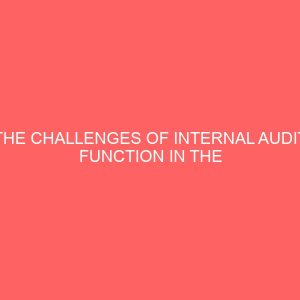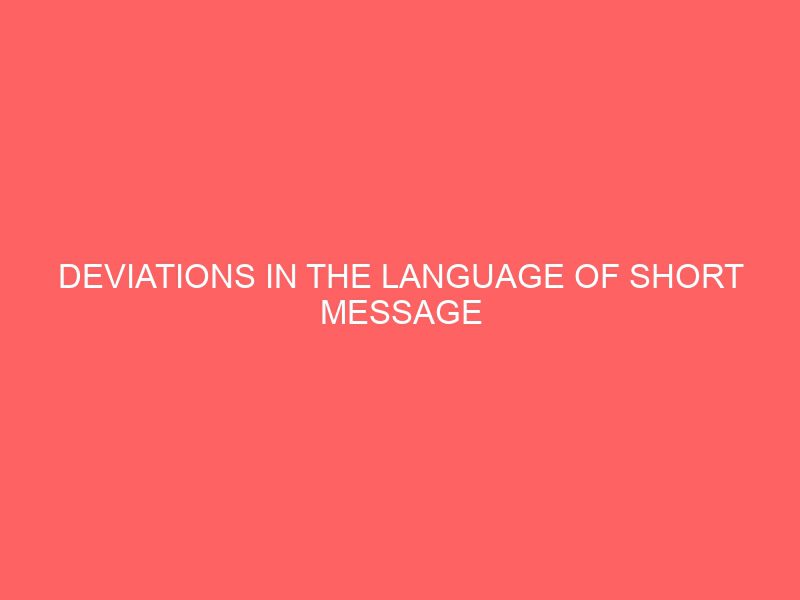Description
ABSTRACT
This dissertation reports a study using a corpus of SMS Short Messages Service text messages in the English language to explore the features and the deviations, which portray text messaging texting as a deviant variety of language. It is concerned with how the SMS language is used by the texters to actively fulfill their interpersonal or communicative goals. The study further states the historical development of telephone by highlighting or tracing the important phases, which brought about mobile phones. So, the introduction of mobile phone generated some innovations in communication and information technology which have brought about this variant form texting of computer mediated written communication. Regardless of these deviations, texting still accounts for the current linguistic or communicative challenges of its users, which some linguists still despise as being a wreck to English and therefore it should be discouraged, because it does not follow the regular patterning of formal English. A number of studies are then reviewed, which explore the unconventional forms of texting, especially its spelling variants which still constitute a meaning making resource. The corpus of texting generated was analysed using the structure of systemic functional model to find out the deviant nature of texting, as a variety. To do this, ten research questions were generated and data were collected from two hundred 200 students, through simple random sampling and also a total number of fifty 50 teachers were selected through the same method; five 5 question items were administered to the teachers and their responses were analysed by the percentage method. The result of the analysis shows that in spite of some of the structural deviations that are inherent in texting, it is discovered that SMS has gained currency, as a deviant variety of written English among texters, especially the youth. It shows the effects of computer mediated technology on the English language.
TABLE OF CONTENTS
Title Page i
Approval Page ii
Certification iii
Acknowledgement . . iv
Dedication v
Abstract . vi
Table of contents . vii
CHAPTER ONE: INTRODUCTION
1.1 Background to the Study 1
1.2 Statement of the Problem 10
1.3 Purpose of the Study 10
1.4 Scope of the Study 11
1.5 Significance of the Study 12
1.6 Research Questions 12
1.7 Definition of Terms 13
CHAPTER TWO: REVIEW OF RELATED SCHOLARSHIP
2.1 Conceptual Framework 15
2.2 Gendering Text Message 16
2.3 Capitalization and Punctuation 18
2.4 Situational Stylistics 19
2.5 Language Variation 20
2.6 Variation and Varieties 23
2.7 Definition of Variety 26
2.8 Standard Variety of English 28
2.9 Identification of Varieties of English in Nigeria 30
2.10 Syntactic Variation 34
2.11 Structural Configuration of Variation 36
2.12 Grammatical Variation 34
2.13 Mechanisms of Linguistic Change 37
2.14 Prescriptive Constructions of Language 37
2.15 The Development of Language in Use 39
2.16 Potential Words 40
2.17 The Language of SMS 40
2.17.1 Informality of SMS 42
2.17.2 Features of SMS Language 44
2.17.3 Social Effect of SMS 46
2.17.4 Inherent Linguistic Deviation of SMS 46
2.17.5 Conciseness of SMS Language 47
2.17.6 Lexical and Semantic Derivative 49
2.17.7 Mode of SMS 49
2.17.8 Texting in Nigeria 50
2.17.9 Youth and Texting 51
2.17.10 Texting for Commercial Trust 53
2.17.11 Texting for the Future 53
2.17.12 Criticism on SMS Language 53
2.17.13 Positive Views on Texting 55
2.18 Theoretical Framework 58
2.19 Empirical Study 64
2.20 Summary 67
CHAPTER THREE: METHODOLOGY
3.1 Research Design 69
3.2 Research Population 69
3.3 Sample and Sampling Techniques 70
3.4 Method of Data Collection 70
3.5 Administration of Instrument 71
3.6 Method of Data Analysis 71
CHAPTER FOUR: DATA ANALYSIS
4.1 Research Question 1 73
4.2 Research Question 2 93
4.3 Research Question 3 100
4.4 Research Question 4 109
4.5 Research Question 5 114
4.6 Research Question 6 119
4.7 Research Question 7 120
4.8 Research Question 8 128
4.9 Research Question 9 131
4.10 Research Question 10 143
CHAPTER FIVE: DISCUSSION OF RESULTS AND CONCLUSION
5.1 Discussion of the Findings 148
5.2 Implication of the Findings 153
5.3 Recommendations 156
5.4 Conclusion 157
Works Cited 159
Appendix I 180
Appendix II 193
Appendix III 199








Reviews
There are no reviews yet.